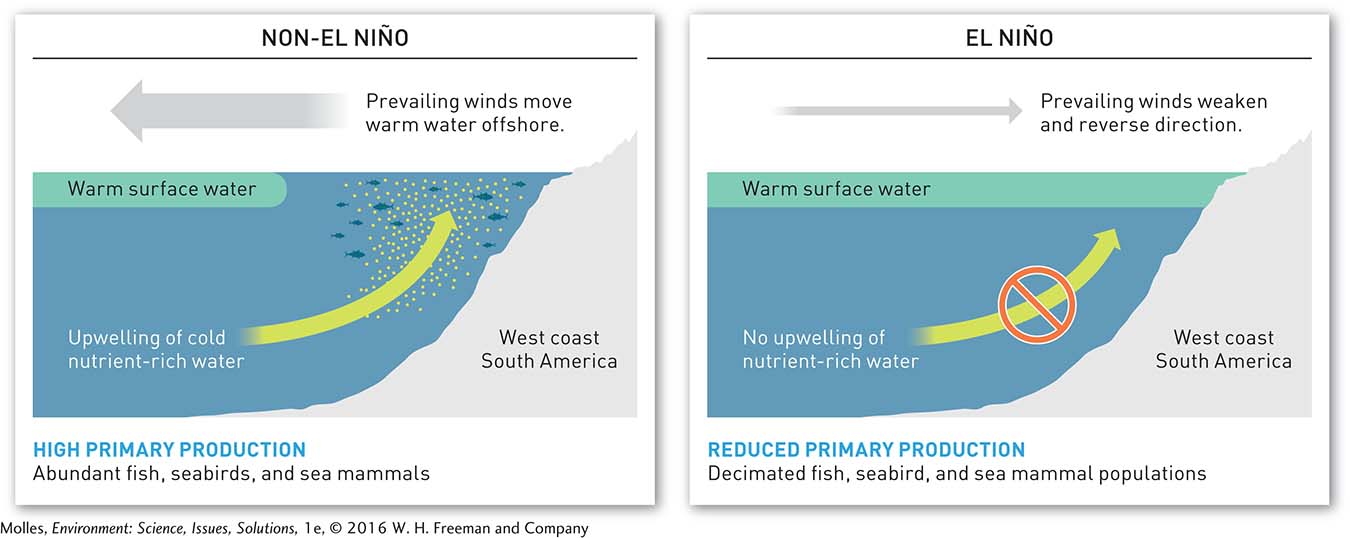8.3 El Niño and other large-scale climatic systems affect fisheries
During the 20th century, scientists uncovered the influence of the El Niño Southern Oscillation (ENSO) (see Chapter 6) on fisheries. During an El Niño, the waters off the west coast of South America are warmed; during a La Niña, they are cooled (see Figure 6.5, page 161). The warm waters brought by El Niño to the coast of South America have been long associated with crashes in commercially important fish populations, such as anchovies, that also trigger widespread mortality among fish-
In the absence of El Niño, there is strong upwelling along the coast of western South America (see Figure 8.4, page 233), which supports high levels of primary production (see Figure 8.7, page 235) and one of the world’s most productive fisheries. However, the coming of El Niño warms the waters off western South America, and essentially shuts off the upwelling of nutrient-


Many of the feeds used in aquaculture incorporate fish meal made from forage fish caught along the west coast of South America. How should the pricing of these feeds vary with the El Niño/La Niña cycle?
8.1–8.3 Science: Summary
The goal of fisheries managers is to estimate how much we can harvest from a fish stock while still keeping it productive.
Prevailing winds blow across the oceans, driving oceanic currents, which influence patterns of primary production and fish stock productivity by transporting warm or cooling waters from one region to another. Upwelling further modifies marine environments by bringing nutrient-
Many commercially significant fish stocks vary as a consequence of oscillations in large-